In October 2009, a team of archaeologists from the Pacopampa Archaeological Project, led by renowned Japanese archaeologist Yuji Seki, discovered a 6.8 feet long tomb, whose remains dated back to approximately 900 BC.
Pacopampa is an archaeological site that is located in the northern highlands of Peru, 1 km from the minor populated center with the same name, in the district of Querocoto, in the province of Chota, in the department of Cajamarca.
Archaeologists from the California State University San Marcos and the Japanese archaeological mission led by Yuji Seki worked together on this finding. This archaeological project was formed in 2005 by an agreement between the National Museum of Ethnology in Osaka, Japan, and the National University of San Marcos, Peru. The team was made up of a group of Japanese researchers and experts who analyzed various materials found, such as human bones, ceramics, animal bones, minerals, metals, and stone artifacts.
This 3,000-year-old tomb belonged to a vigorous lady who was born in the highest terraces of Cerro San Pedro (now in the Cajamarca province of Chota), a new historical passage of the distant formative period. Interestingly, the town that inhabited the site, known as the archaeological complex of San Pedro de Pacopampa, celebrated the birth of a healthy girl who was destined to become a powerful leader.
When archaeologist Yuji Seki and his team discovered the tomb of this elite woman in the Pacopampa Archaeological Complex, they also found a very important detail that sheds new light on what the formative period (or Neo-Indian period) was like.
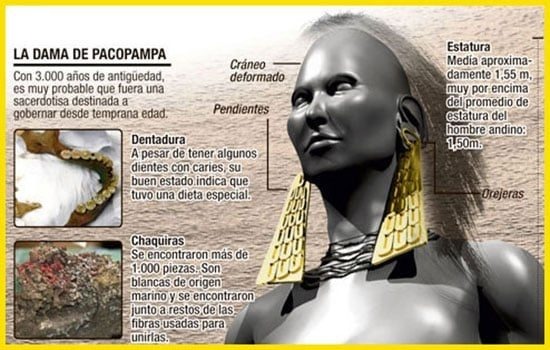
For archaeologists, the process of unearthing the funerary context was very complicated. In those days of hard work, Yuji Seki noticed a very important detail that could confirm a hypothesis that he raised five years ago, when he just started his research in that region of the northern highlands of Peru. This research had the scientific support of physical anthropologists Kazuhiro Uzawa and Tomohito Nagaoka.
Seki discovered that the remains of the Lady of Pacopampa had a deformation in the back of the skull as well as other mysterious elements, including a blue substance (possibly of mineral origin) that was smeared on her remains along with cinnabar, as it was customary to bury the rulers of ancient Peru at that time.
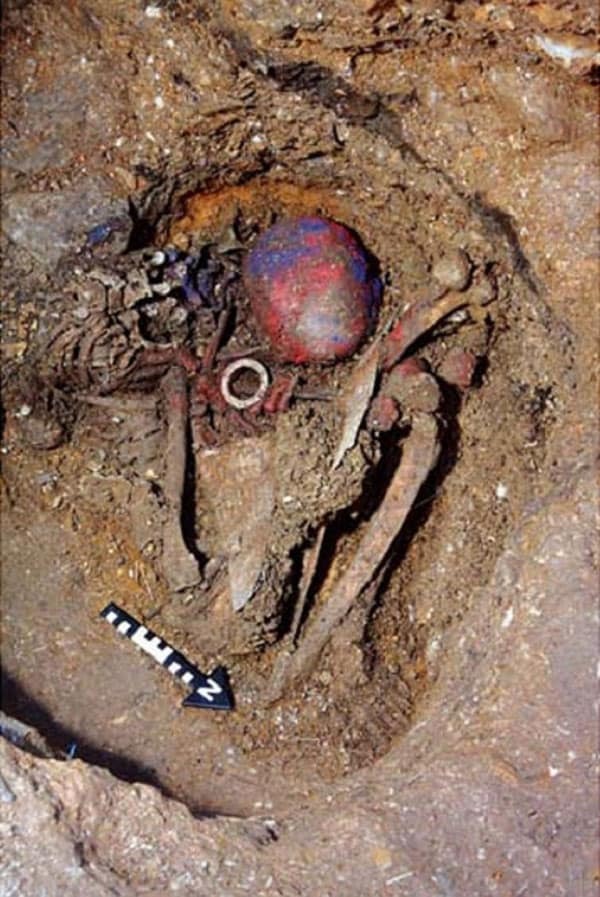
According to anthropologist Kazuhiro Uzawa, the cranial deformation of the Lady of Pacopampa could be the decision made by her guardians. To achieve this process of deforming her skull, splints were placed on the back of her head since her birth.
The Japanese scholar points out that this process of cranial deformation began when she turned three years old. The conclusions provided by the Japanese anthropologists confirmed the hypothesis of Yuji Seki, which motivated his research to investigate the development of political power at that time in ancient Peru.
The discovery of the remains of the Lady of Pacopampa gives new insights and reveals the existence of elite groups in this incipient society that developed at that time. Yuji Seki affirmed that during the excavations, his hypothesis was always around in the head, and when the surprising tomb of this ancient lady appeared, it served as support to corroborate what he had always maintained. The Japanese researcher is completely sure that the girl, just born, had a definite destiny, and that it became a reality when she grew up.
The first clue to the existence of this tomb was the appearance of a singular rock in the middle of the main platform of the archaeological complex of San Pedro de Pacopampa.
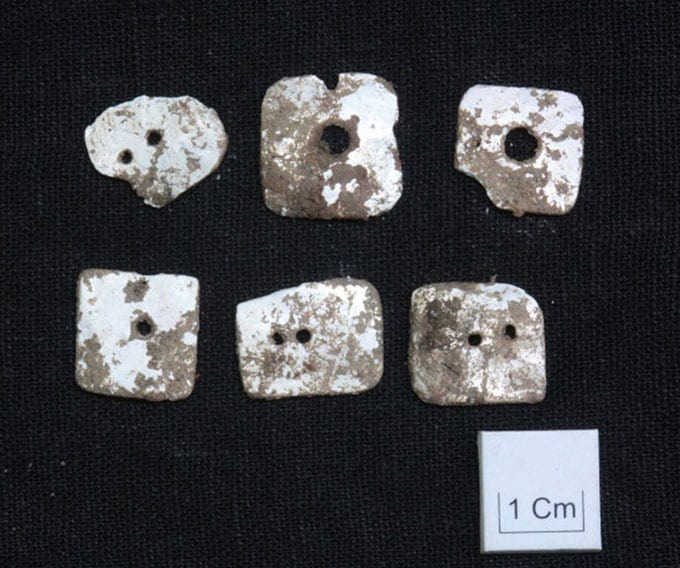
The ancient lady of great political or religious power wore two earrings made of gold, about 25 cm long each. They hung from two earmuffs also made of the same material that were embedded in her earlobes. Other ornaments made of stones and a necklace of beads made of mollusk shells were also found in her tomb, which evidences the commercial exchange that existed at that time of Pacopampa with the peoples of the coast. An anklet on the lady’s right foot also completed the funerary trousseau.
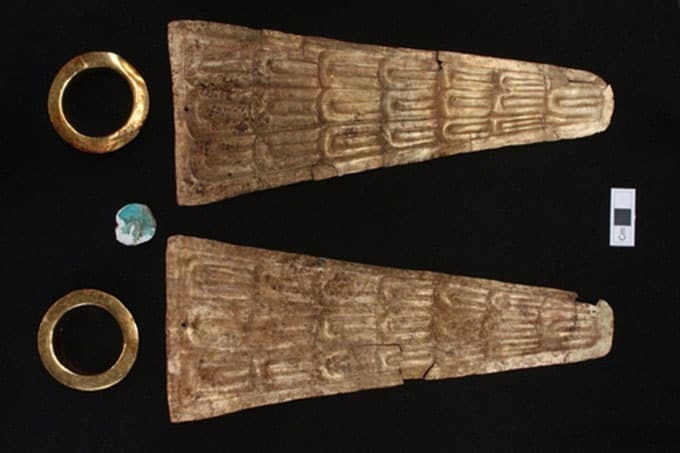
Along with her remains, offerings were found, including a small bottle with a long neck, a flat base, and a globular body, a dessert dish that has holes in its pedestal base through which the air enters to maintain combustion, a cup decorated with lines and circles, a bowl with a flat base that was found on the dessert dish and remains of charcoal and ash that show the performance of some ritual or ceremony moments before the burial.
The remains of the “Lady of Pacopampa” have been one of the most important discoveries of the Pacopampa Archaeological Project. She was an Andean lady between 25 and 45 years old. She was 155 cm tall. Scholars consider her the tallest woman for her time since the other burials found in Cajamarca have an average height of 1.45m for women and 1.50m for men. There is evidence indicating that her remains had been buried before the construction of the ceremonial temple, lying on her left side and in a flexed position.
Yuji Seki could not affirm that the Lady of Pacopampa was a queen or a chief, or if she was a kind of advisor whose wisdom and power laid in the religious character of their acts. She could be a priestess who dominated the supernatural world and with a strong handle on ideology, he argued.
Scholars claimed that this finding shares many characteristics with the sumptuous tombs found at Kuntur Wasi, in the Andean highlands of Peru, such as the use of gold, the squatting position of the corpses, the red pigments that cover the bodies. These similarities confirmed the social changes that occurred in that region during the ninth century.
However, there was an important difference between these two sites.
Evidence of intensive use of copper objects has been found in Pacopampa, something that did not occur in other sites in the Cajamarca region. The researchers confirmed that there is a deposit of this mineral in that region that was exploited for at least 3,000 years and that there is a possibility that this was the power base of the ruling classes of this ancient society.
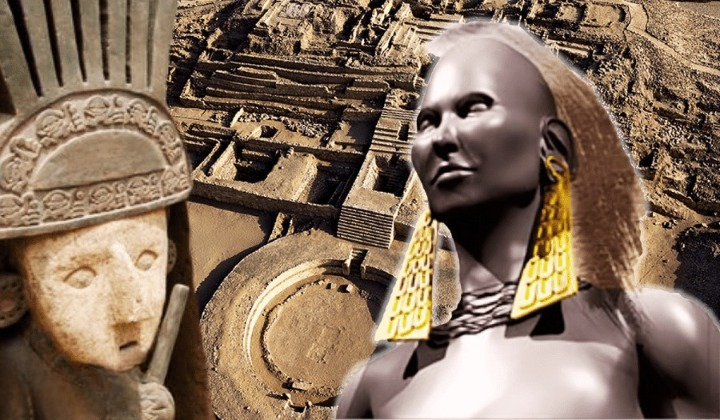
Leave a Reply